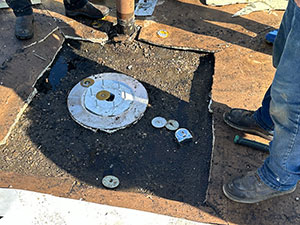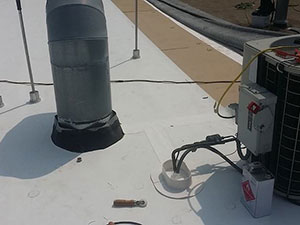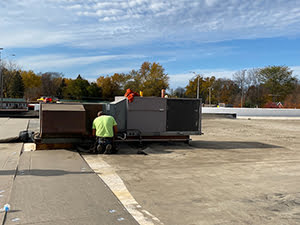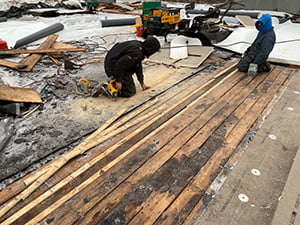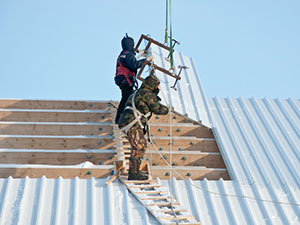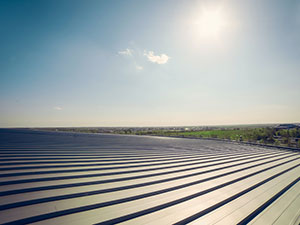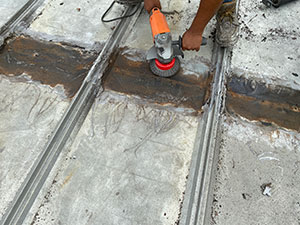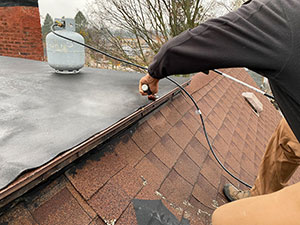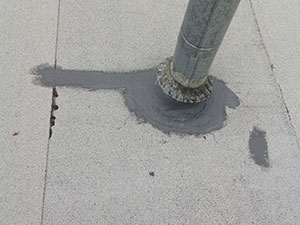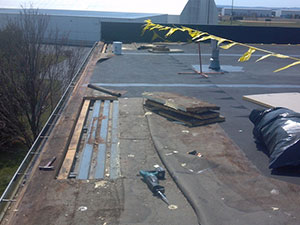
The roof of a commercial building represents a significant capital investment and serves as the primary defense against environmental elements. Without strategic maintenance, even industrial-grade roofing systems can deteriorate prematurely, leading to disruptive business operations and unnecessary substantial replacement costs.
In the Vernon, CA area, building owners and property managers can count on Shark Commercial Roofing Systems for the long-term care of their commercial roof. Call 213-466-0074 today and schedule your consultation with our experts.
Impact of Neglected Maintenance
For business owners and facility managers, roof problems extend beyond the physical structure—they affect operations, inventory, equipment, and customer experience. Studies show that commercial roof leaks cause an average of $19,000 in interior damage before detection. Moreover, unexpected roof failures can trigger business interruptions costing thousands per hour in lost productivity and revenue.
How Roof Maintenance Improves Longevity
Scheduled Professional Inspections
Commercial facilities require quarterly inspections at minimum, with additional assessments following extreme weather events. These inspections typically evaluate:
- Membrane integrity and seam conditions
- Drainage system functionality
- Rooftop equipment curbs and penetrations
- Parapet walls and edge terminations
- Signs of chemical exposure or contamination
- Structural deflection or movement
Drainage System Maintenance
Commercial flat roofs depend entirely on properly functioning drainage systems. Regular clearing of drains, scuppers, and downspouts prevents the ponding water that causes membrane deterioration. Many commercial buildings benefit from installing drain guards and implementing monthly drainage pathway inspections.
Roof Traffic Management
Unlike residential roofs, commercial roofing systems often experience regular foot traffic from HVAC maintenance, security personnel, and other building services. Implementing designated walkways, maintaining access logs, and requiring proper protocols for all roof access significantly reduces wear patterns and accidental damage.
Financial Case for Commercial Roof Maintenance
For CFOs and property managers, roof maintenance represents a quantifiable return on investment:
- A typical commercial TPO or EPDM membrane lasts 15-20 years without maintenance
- With proper preventative care, the same systems can perform for 25-30 years
- For modified bitumen or built-up roofing systems, maintenance can extend lifespans from 20 years to 30+ years
Financially, the calculation is compelling: investing $5,000-10,000 annually in maintenance can postpone a $250,000-500,000 replacement by 5-10 years—representing millions in lifecycle cost savings for large commercial properties.

Professional Roofing Contractors
While facility maintenance teams can perform basic visual inspections and debris removal, commercial roofing requires specialized expertise. Professional roofing contractors utilize advanced diagnostics like infrared moisture scanning, electronic leak detection, and core sampling that identify problems invisible to the naked eye. Industry data confirms that professionally maintained commercial roofs outlast those with only in-house maintenance by 40-60%.
Seasonal Roof Maintenance Protocols
Different seasons present unique challenges for commercial roofing systems:
- Spring: Assessment of winter damage, seam inspection, debris removal
- Summer: UV damage evaluation, expansion joint examination, HVAC curb inspection
- Fall: Drainage preparation, membrane cleaning, flashings assessment
- Winter: Snow load monitoring, ice dam prevention, interior leak detection
Roof Maintenance Professionals
Commercial roof maintenance isn’t merely a preventative measure, it’s a strategic business decision that protects capital investments and ensures operational continuity. A well-maintained commercial roof enhances energy efficiency, supports sustainability initiatives, and provides reliable protection for the assets beneath it. By implementing a scheduled maintenance program, facility managers transform roofing systems from depreciating liabilities into long-term assets with predictable lifecycles and performance metrics.
Remember: In commercial facilities, the most expensive roof is one that fails unexpectedly. With proper maintenance protocols, you ensure your roofing investment delivers its maximum potential return.
To learn more ways to get the most from your Vernon, CA commercial roof, call 213-466-0074 today and speak with a specialist.
FAQ
How often should commercial roofs be professionally inspected?
Commercial roofing systems should be inspected quarterly at minimum, with additional assessments after severe weather events. Buildings with high-value operations or inventory may benefit from monthly inspections, particularly of drainage systems and roof access points.
What are the warning signs that a commercial roof needs immediate attention?
Interior water stains, unexplained odors, increasing energy costs, bubbling or blistering on the membrane surface, visible membrane separation at seams, or clogged drains warrant immediate professional evaluation. Rapid response to these indicators can prevent extensive damage.
Is roof maintenance different for different commercial roofing systems?
Absolutely. Single-ply membranes (TPO, PVC, EPDM) require seam examination and puncture assessment. Modified bitumen systems need blister and delamination checks. Metal roofing demands fastener inspection and surface coating evaluation. Each system has specific vulnerabilities requiring tailored maintenance approaches.
Can roof maintenance improve a company’s bottom line?
Yes. Beyond preventing costly repairs, regular maintenance extends roof lifespan by 30-50%, improves building energy efficiency by 5-15%, reduces insurance premiums through risk mitigation, and minimizes business interruption events. Many companies report maintenance ROI of 300-400% when considering all financial impacts.
What commercial roof maintenance tasks can facility staff perform versus requiring contractors?
In-house maintenance teams can safely perform visual inspections, clear lightweight debris, maintain roof access logs, monitor interior conditions, and perform basic drain cleaning. However, membrane repairs, equipment flashing installation, moisture testing, and structural assessments should be performed by licensed roofing professionals.
roof maintenance vernon ca




